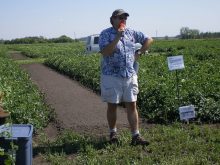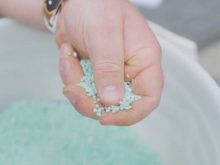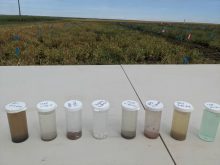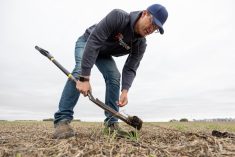As my PhD work conducted over the past four years reaches its completion, I’ve reflected on my master’s work more in the last few months than I’ve done since completing it nine years ago. In this column, I would like to highlight a few take-home messages from that work.
The 4Rs of phosphorus (P) stewardship were central to the theme of my former project, as they are with my current PhD studies.
The study was initiated in the spring of 2014 at a field near Central Butte, Sask. Within that field, one site was established on a water-shedding upslope position and a second site on a downslope. Treatments consisted of combinations of P fertilizer application rates and placement methods. Monoammonium phosphate (MAP) was the P fertilizer source applied in all treatments.

Yield response was evaluated in soybeans. While soybean grain yield was not significantly influenced by the treatment, the highest yield recorded at each site was from the deep-banded treatment. Matching this yield response, deep-banded placement also resulted in the highest apparent recovery of applied fertilizer P (31 per cent), and recovery from this treatment was substantially greater than that calculated from any of the broadcast treatments, either with or without incorporation (<10 per cent).



I also investigated residual soil P following crop harvest. Following crop harvest, I used a nail board to remove a soil monolith from plots of each treatment of the upslope position. After removing the monolith, a micro-coring device extracted samples from grid points set in both horizontal directions from the seed row and at multiple depth increments. The objective of this work was to conduct a high-resolution assessment of fertilizer P movement through the soil profile over the growing season, as affected by rate and placement method. The treatment effect where P fertilizer was applied at a constant rate of 20 kg P2O5 ha-1 but by different placement methods is revealing.
Read Also
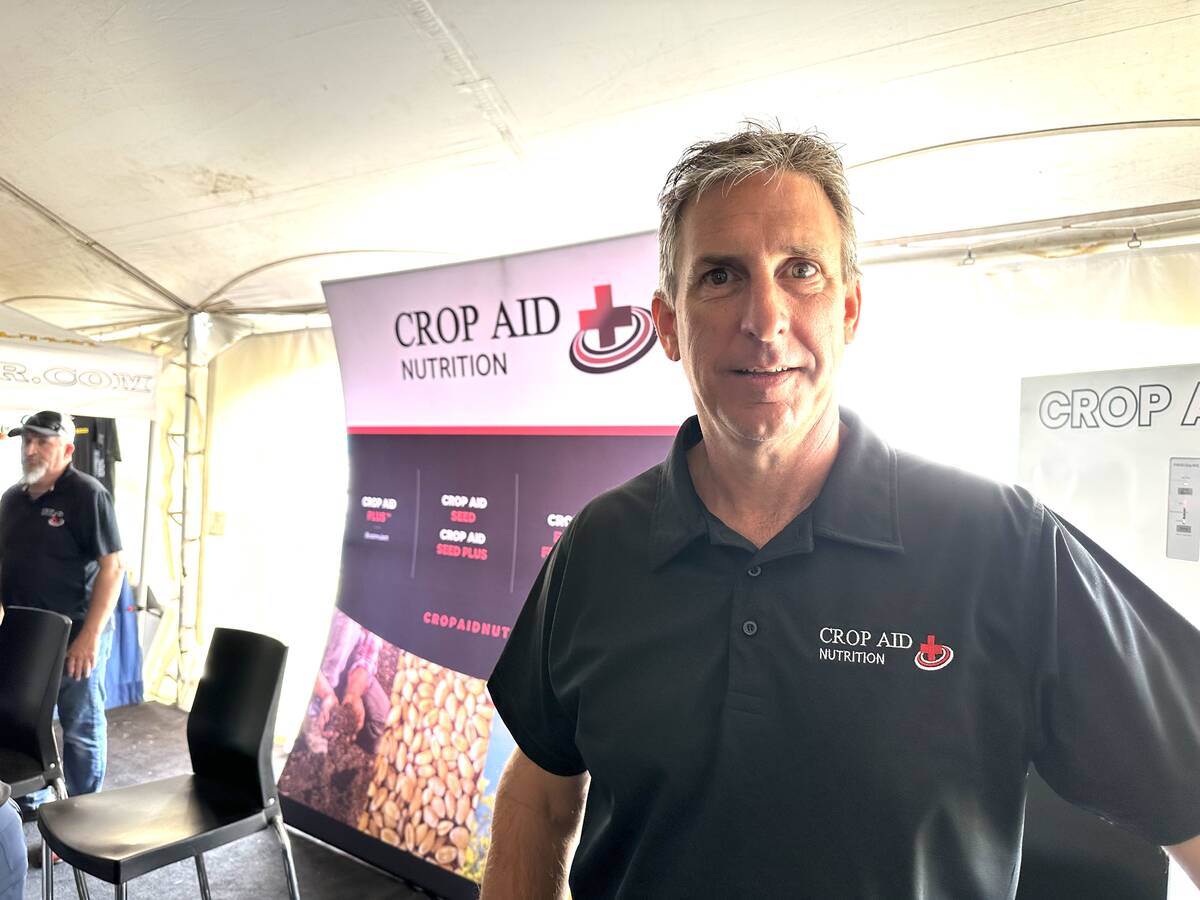
New soil treatment targets saline patches in fields
Crop Aid SS is a Saskatchewan-made spray that’s intended to help farmers manage saline soils by leaching salts away from the root zone.
Each image of Figure 4 shows the change in soil test P at each grid point sample location compared to what was measured from the respective grid point of the control treatment. Looking at the effect of the seed-placed treatment, a substantial enrichment in soil test P at the seed row from the soil surface to an approximate depth of four cm is evident, matching the approximate seeding depth. The increased soil test P does not extend to five cm in either horizontal direction from the seed row. Similarly with the deep-banded treatment, enriched soil test P is centred around the seed row, but extending to a depth of seven cm, which matches the depth of the deep-banded placement.




These results confirm the well-understood observation that P movement is limited in soil, particularly under dry soil conditions. Phosphorus movement in the soil occurs primarily by diffusion, and previous research has shown P diffusion distances to be influenced by soil moisture status. For example, in a controlled environment incubation study, researchers observed P diffusion distances seven days after application of triammonium pyrophosphate to increase from 18 to 34 mm as soil moisture status increased from 6.7 to 19 per cent (Khasawneh et al., 1974).
In contrast to the results from the seed-placed and deep-banded treatments, broadcast application either with or without incorporation caused soil test P to be distributed more evenly through the soil profile. For example, in both treatments, soil test P was more evenly enriched to a 10 cm distance in either horizontal direction from the seed row compared to the seed-placed or deep-banded treatments. As expected, incorporation caused the soil test P enrichment to move deeper in the profile, to a depth of seven cm compared to only four cm in the broadcast without incorporation treatment.
Beyond the agronomic benefits of deep-banded P fertilizer application compared to broadcast as noted before, placement in a concentrated band also reduces the accumulation of soil-test P near the soil surface, known as stratification. This effect may be worsened by the direct seeding management system common to the Canadian Prairies, where fertilizer bands are typically placed within the top five cm of soil every year. Soil P stratification can lead to elevated losses of P in snowmelt runoff. In this study, pre-plant broadcast application at 20 kg P2O5 ha-1 led to significantly greater total dissolved P losses (-40 g ha-1) compared to the seed-placed or deep-banded application (-10 g ha-1). Phosphorus losses from the broadcast with incorporation treatment were similar to the seed-placed and deep-banded treatments. This means it’s important to incorporate P to limit losses if broadcasting is necessary.
In summary, this work sought to evaluate the agronomic and environmental performance of P fertilizer application rates and placement methods. Generally, in-soil placement methods resulted in greater soybean yields and lower P losses in snowmelt runoff compared to broadcast applications. Notwithstanding the potential associated logistical and equipment-related challenges, deep-banded P fertilizer application shows promise as a management strategy to promote recovery of applied P fertilizer while limiting P losses in snowmelt runoff.
While this work represents a successful initial exploration, additional research is needed to assess the performance of deep-banded placement for a range of crop types as well as the optimal placement depth as influenced by conditions such as soil moisture.
References
Khasawneh, F.E., Sample, E.C., and Hashimoto, I. (1974). Reactions of ammonium ortho- and polyphosphate fertilizers in soil: 1. Mobility of phosphorus. Soil Science Society of America Journal, 38, 44651.




